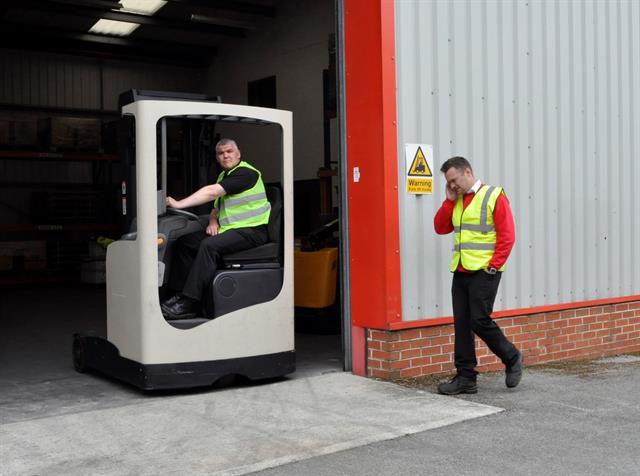Contrary to
popular belief, should a forklift accident occur, it is not the person on the
truck who is most at risk.
Pedestrians in
the vicinity have little protection against injury, especially if they don’t
understand how to recognise potential risks and keep themselves (and others)
safe.

Pedestrians can
include colleagues working on foot, site visitors, delivery drivers, staff
members from other areas of the company and even forklift drivers themselves,
once they have dismounted from their trucks.
Anyone who may
find themselves near to moving materials handling equipment (MHE) is at risk.
Ultimately, it
is the responsibility of forklift operators (and their managers/employers) to
ensure forklifts are used safely on site and operator training, safe systems of
work and regular monitoring will undoubtedly help to create safer operations.
But basic
awareness training can also significantly reduce risk for this vulnerable
group. So what steps can pedestrians take?
-
Use pedestrian
walkways/zones: Inadequate segregation between trucks and pedestrians
poses a huge risk to safety. Forklifts and people on foot should be
separated, wherever possible, ideally by physical segregation using
barriers, designated zones and separate traffic routes to keep them apart.
Walkways should always be used where available.
-
Adhere to safe systems of
work: Where total separation is not feasible and staff are required to
perform tasks in a shared area, there should be other control measures in
place to keep them apart. Safe systems of work (SSOW) – based on risk
assessments of specific tasks – will ensure that all parties understand
how to carry out their duties safely. These should be communicated to all
who may be affected and must be followed day in, day out.
-
Keep a safe distance from
MHE: This is a fundamental principle which everyone should follow
throughout their time on site to reduce risk, and should be part of a
SSOW. Sadly, many injuries occur when pedestrians find themselves too
close to forklift trucks when they do not need to be there in the first
place. When deciding on a safe distance, consider the specific nature of
the operation, e.g. if a forklift is unloading from height, leave more
distance as, in the event of a tip over, the area covered by the falling mast
and load will be larger.
-
Wear personal protective
equipment (PPE): Pedestrians must wear any PPE issued to them by their
employer for their safety, such as high vis jackets and safety boots. Not
only is this good practice, it is also a legal requirement upon the
employee.
-
Follow signage: Take note of
any posters and signs positioned around site, and follow the safety
measures, guidance and travel routes.
-
Report bad practice: Staff
must be mindful not only of their own safety, but also that of their peers,
and while managers have an obligation to monitor behaviour, there may be
times when it is necessary for a staff member to flag the actions of
others. Unsafe forklift operation or disregard for safe travel routes are
examples of bad practice that should be reported to a supervisor for the
safety of everyone on site.
Training for all
Forklift
awareness training for operators and pedestrians alike allows everyone to
understand the importance of following safety measures, and the potential
consequences if they don’t. These types of courses emphasise to all parties the
need to remain alert to their surroundings and maintain safe distances between
MHE and pedestrians at all times. By increasing forklift safety awareness
across the board, you can ensure that everyone is equipped to contribute to a
safer site.
|



 Chinese
Chinese USA
USA English
English Russia
Russia